How To Sell on Facebook Marketplace: A Complete Guide
This article will walk you through “how to sell on Facebook Marketplace”
Key Takeaways
- Selling on Facebook Marketplace offers shop owners many advantages. With its vast user base, you can reach more potential customers. Moreover, its feedback system provides valuable insights, and the integrated messaging strengthens connections between sellers and buyers.
- Facebook Marketplace has rules to ensure people do the right thing, but it also has many categories to fit various things for sale.
- Sellers must strictly complete certain prerequisites and steps to ensure a smooth experience, such as payment method and response time,…
Why Sell on Facebook Marketplace?

Large user base
- Local and International Sales: Facebook Marketplace primarily focuses on local sales, but it’s also used by international buyers. If you have items that can be shipped internationally, you can cater to both local and global customers.
- Niche Audiences: There are groups for everything you can think of on Facebook. So, if you’re selling something special, you can find a group of people who really like that thing.
Seller ratings
- Feedback System: On Facebook Marketplace, buyers and sellers can rate their transactions on a scale of 1 to 5 stars, similar to movie ratings. Additionally, they have the option to leave comments detailing their experience.
- Trust and Credibility: Good ratings show that you are trustworthy. When people see that others had a good experience buying from you, they feel more confident that you’re a reliable and trustworthy seller.
- Feedback for Improvement: If you get bad or just okay ratings, they can help you improve. It shows where you can do things differently and make your selling better. It’s a chance to learn from what went wrong and make things right.
Built-in messaging system
- Easy Messaging: Messaging on Facebook Marketplace is easy. When someone messages you about something you’re selling, you get a message right in the Facebook app or website, so it’s easy to reply fast.
- Centralized Communication: All your messages about what you’re selling are in one spot on Facebook Marketplace. You don’t need to check many places like your email or other apps.
- Seller-Buyer Connection: When buyers and sellers use their Facebook profiles, it helps everyone feel more honest and safe. People probably won’t try to do something tricky because their names and faces are there for everyone to see.
What can you sell on Facebook Marketplace?
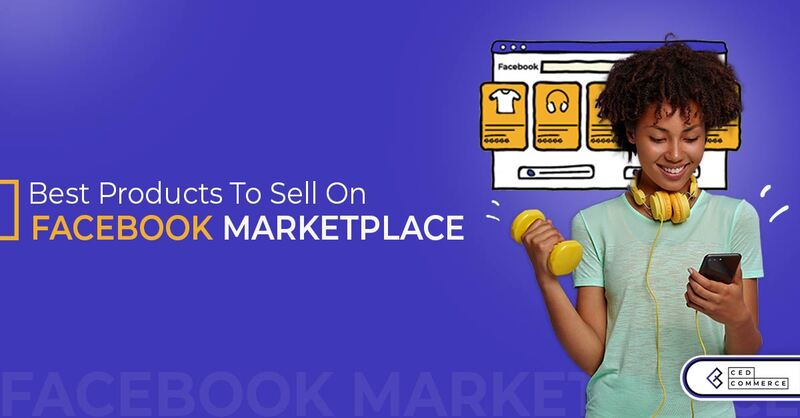
Facebook Marketplace serves as a local online store where individuals can conveniently buy and sell various items. While there are guidelines to maintain integrity, it offers diverse categories to fit a wide range of products. Let’s delve deeper into what this popular platform has to offer:
- Physical Goods: Facebook Marketplace provides a versatile stage for exchanging tangible items, including:
- Electronics: This category varies from cutting-edge smartphones and laptops to gaming consoles and high-fidelity headphones.
- Clothing and Accessories: You may find an eclectic selection featuring garments, shoes, chic handbags, and elegant jewelry.
- Furniture: Home decor items like luxurious couches, stylish tables, comfortable chairs, and full bedroom sets may be tempting for decor lovers
- Home and Garden: Household items, from essential kitchen appliances to robust gardening tools and stylish home decor, can be found here.
- Vehicles: Opportunities abound for trading cars, motorcycles, bicycles, vehicle parts, and accessories.
- Toys and Hobbies: Parents may love this section with a collection of toys, collectibles, detailed model kits, and hobbies-related items.
- Sports and Fitness Equipment: Enthusiasts can discover an array of exercise machines, sports gear, and workout accessories.
- Services: Besides physical goods, Facebook Marketplace accommodates service offerings, enabling users to advertise their expertise. Services include:
- Home Services: A broad spectrum of home-related services, including cleaning, plumbing, electrical work, and more.
- Event Services: Facilitating event planning with professional photography, delectable catering, meticulous event planning, and entertaining DJ services.
-
Digital Goods: While the core focus of Facebook Marketplace revolves around tangible items, exceptions exist for selling digital products such as enlightening e-books, instructive online courses, and captivating digital artwork.
-
Tickets: The platform extends its reach to the entertainment world, permitting the listing and purchasing event tickets, including coveted seats at concerts, thrilling sporting events, or riveting theater performances.
-
Handmade and Crafted Items: Artisans can display their jewelry, crafts, artwork, and custom-made items on Facebook Marketplace. However, they must comply with Facebook’s set policies.
-
Animals and Pet Supplies: Some regions permit the sale of pets, subject to certain restrictions and guidelines. Users can also explore pet accessories and supplies to cater to their furry friends’ needs.
-
Job Postings: In select part, job seekers and employers can benefit from the platform’s inclusion of job listings, fostering employment opportunities within the community.
-
Real Estate and Rentals: In some regions, Facebook Marketplace is used to advertise real estate for sale or rent. You might need to use Facebook’s “Housing” section for such listings if available in your area.
- Free Items: The “Free Stuff” category highlights generosity on Facebook Marketplace, where users can give away items, encouraging community sharing and sustainability.
Facebook Marketplace is akin to a vast marketplace for buying and selling. Yet, it’s crucial to adhere to Facebook’s rules. To avoid problems, you must ensure your listings follow the laws and rules in your area for selling things. Here are some content and items you should never sell:
- Adult Content
- Stolen Property
- Tobacco Products
- Alcohol
- Pets
- Misleading or Inaccurate Listings
- Hate Speech and Discriminatory Items
- Financial Services and Cryptocurrency
- Health and Personal Care Products
- Recalled Items
- Gift Cards and Coupons
- Weapons and Explosives
- Unrealistic or Dangerous Offers
- Illegal Services
- Altered Identification Documents
It’s vital to understand and follow Facebook’s general policies and any region-specific guidelines. Breaching these rules can lead to listing removals or account restrictions, so ensure you conduct business responsibly and ethically.
Prerequisites for Selling

To start selling on Facebook Marketplace, you need to complete certain prerequisites and steps to ensure a smooth experience. Here are the key things you need:
- Facebook Account: Have an active and verified Facebook account. If you don’t have one, create a Facebook profile.
- Age Requirement: At least 18 years old to use Facebook Marketplace.
- Location: Ensure you are in an area where Facebook Marketplace operates and accurately set your location settings.
- Compliance: Understand and follow Facebook’s Commerce Policies to know what you can and can’t sell.
- Payment Method: Depending on your region, you should link a payment method like a credit/debit card or PayPal for transactions.
- Item Details: Prepare good-quality images and accurate descriptions for your listings.
- Response Time: Respond promptly to potential buyers’ inquiries.
- Local Regulations: Know and follow local laws and rules for selling specific items.
- Shipping Options: Understand the available options and costs or specify local pickup.
- Pricing: Decide on your item prices based on research of similar listings.
- Inventory: Plan how to manage multiple items and track what’s sold.
- Safety: Prioritize safety when meeting buyers in person, choosing safe meeting places, and handling cash transactions securely.
Once you’ve met these requirements, you can begin listing items and selling on Facebook Marketplace. Remember to follow Facebook’s guidelines and policies to maintain a positive and trustworthy presence on the platform.
Step by step to sell on Facebook Marketplace
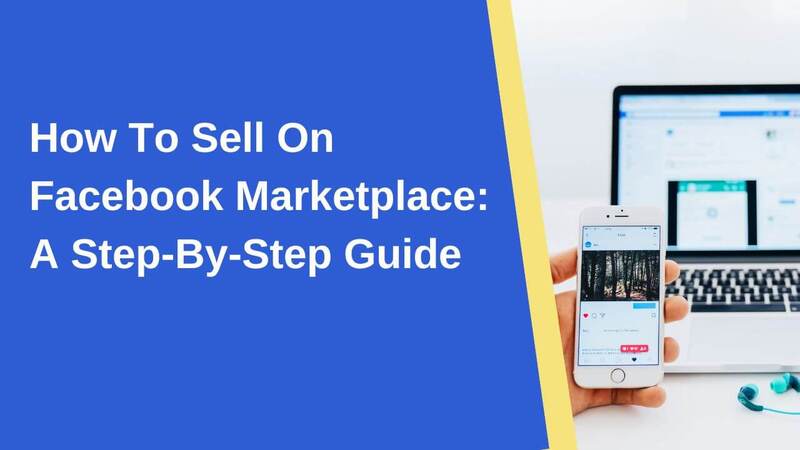
As a newbie, follow this tutorial to ensure you are on the right track to yield the best results.
How to Sell on Facebook Marketplace as a Casual Seller
Selling on Facebook Marketplace as a casual seller allows you to list your items and connect with potential buyers in your local area. Here are the steps involved:
Step 1: Create a Facebook Marketplace account
- Log in to your Facebook account and click “Marketplace” in the left column.
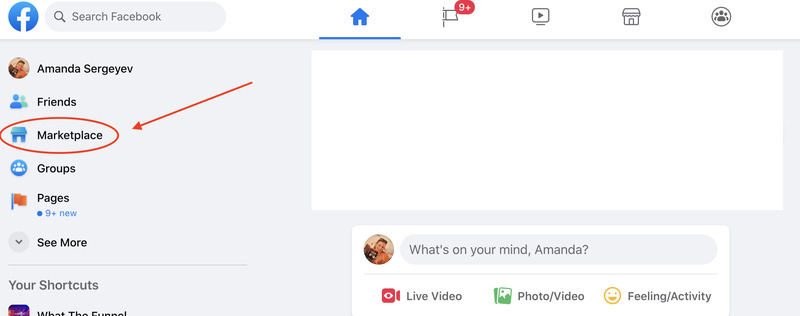
-
Verify your location when asked and accept the terms of service.
-
Set up your profile with a picture, cover photo, and description.
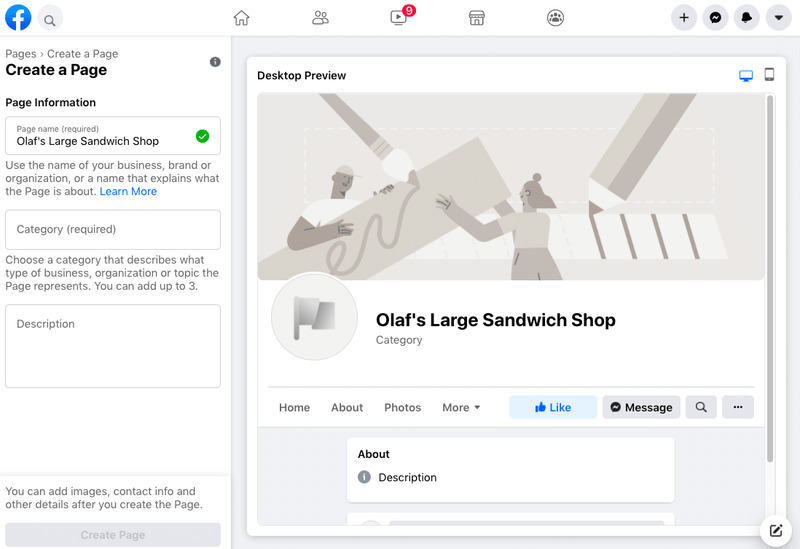
- Click “Sell Something” and create a listing.
Once completed, you can keep looking at things to buy or sell and join local groups for buying and selling.
Pro tip: You can use a VPN (Virtual Private Network) to make your internet connection more secure when you log in to your Marketplace account. It can protect your information and keep you safe from online hackers.
Step 2: List your products
-
Go to News Feed and click “Marketplace.”
-
Click on “Create New Listing”.
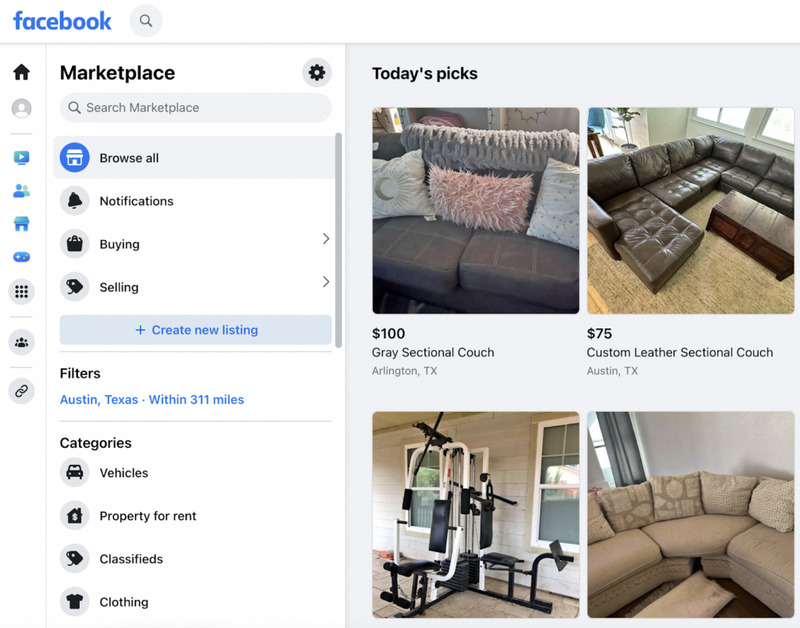
- Choose an “Item for Sale” from the listing types.
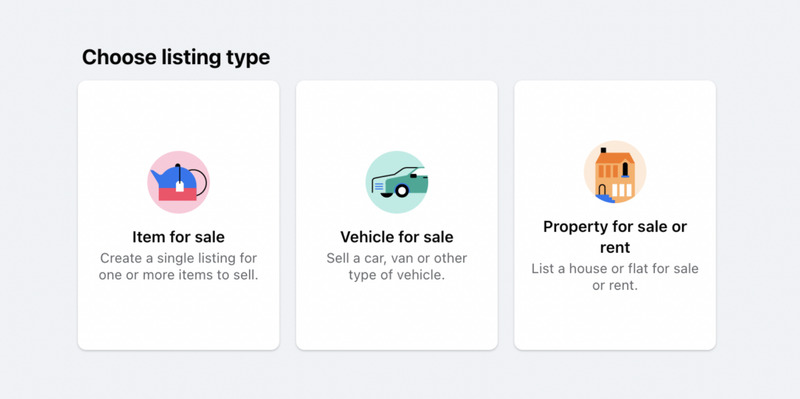
-
Upload up to ten high-quality photos.
-
Enter the product details, including the title, description, and price.
-
Choose the category and product condition from the dropdown menus.
-
Use the description box to highlight the product features and describe in more detail.
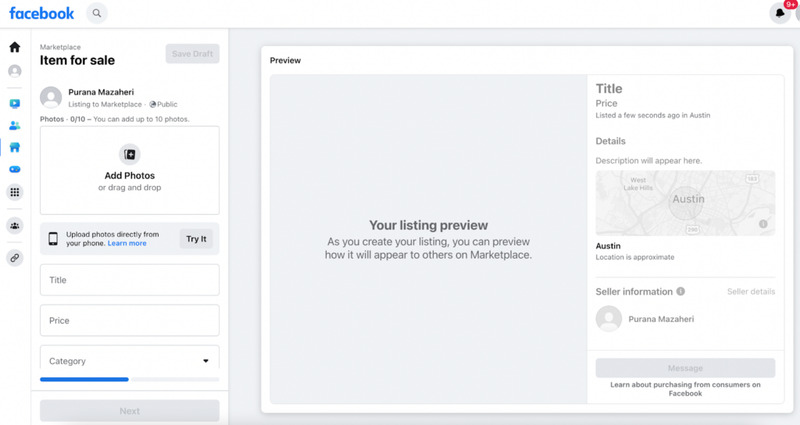
-
Add up to 20 product tags to enhance visibility in search results.
-
Set the location where the item is available.
-
Check the preview to see if all the information and details are correct.
-
Publish your product listing.
Congratulations! Your products are now on Facebook Marketplace. To boost sales, consider using Facebook Ads for broader exposure.
Step 3: Mark your product listing
You should keep track of the availability of your products by marking their status appropriately. Let’s follow these steps:
- Access Your Marketplace Dashboard: Log in to your Facebook account and navigate the Marketplace section.
- Go to “Your Listings”: Within your Marketplace dashboard, locate and click on the “Your Listings” option to view and manage the products you’ve listed.
- Mark the Status of Your Product:
- Find the product listing you want to update.
- Click on “Mark as” to open a dropdown menu.
-
Choose one of the following status options:
- Available: Select this option if the item is still available for sale.
- Pending: Use this status if a buyer shows interest, but the sale isn’t confirmed yet.
- Sold: Mark the item as “Sold” once the sale is complete. It will no longer be visible in the Marketplace.
- Shipped: If you’ve shipped the item to the buyer, you can use this status to indicate that it’s coming.
Step 4: Fulfill and ship your orders
Shipping and checkout features on Facebook may vary by region. If they’re unavailable where you are, you’ll need to arrange shipping with the buyer directly.
For occasional sellers, it’s best to arrange local pickups or in-person meetings, allowing the buyer to inspect the item before purchase. If shipping, ensure all details and costs are clear and agreed upon before finalizing the sale.
How to Sell on Facebook Marketplace as a Business
For businesses, Facebook Marketplace is a valuable sales channel that enhances reach and efficiency. In the US, it provides in-app checkout for streamlined sales.
Step 1: Create a Facebook Shop
To start selling as a business on Facebook Marketplace, you first need to create a Facebook Shop. If you don’t have a Facebook Page already, make one using the shopping template. This will enable you to use the Shop section to sell your products to people on Facebook.
Step 2: Enable Facebook Checkout

For US sellers, the Commerce Manager offers multiple checkout options, including Checkout on Facebook and Instagram, on your website, or via messaging. However, with Meta’s announcement for April 24, 2024 announcement, Shops without Facebook and Instagram activation will be inaccessible. This implies that the “Checkout on your website” option might soon become obsolete.
To enable in-app checkout, follow these steps in your Commerce Manager dashboard:
- Select your Shop.
- Click on “Settings” and choose the Checkout method.
- Pick your preferred checkout method and click “Change.”
- Provide the required information.
- Click “Confirm.”
During setup, you’ll need to give your bank account details to get payments and define a return policy for in-app orders. While initial approval might take up to 48 hours, you can change the checkout method anytime with instant changes.
Step 3: Enable Facebook Marketplace
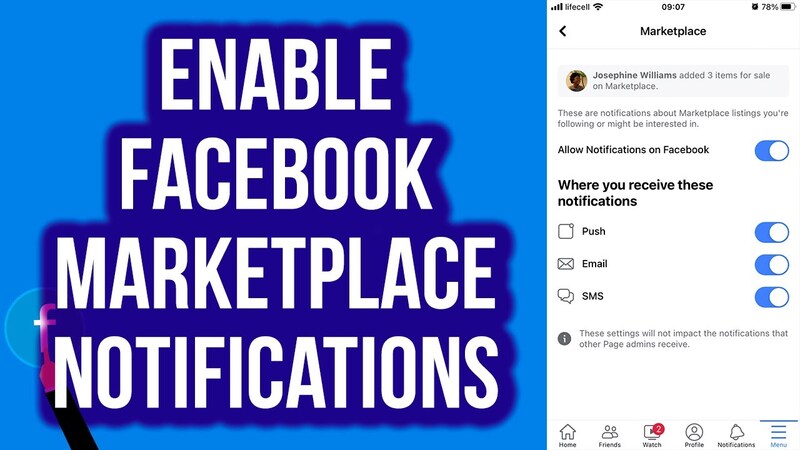
To ensure all your shop’s eligible products are visible on Facebook Marketplace, follow these steps:
- Visit Facebook Commerce Manager.
- Go to your Facebook Shop.
- Click on “Settings.”
- Under Business Assets, choose “Enable Marketplace.”
This will enable you to start selling your products on Facebook Marketplace. The process is similar to what casual sellers need to do.
Step 4: Boost your listings

To improve your chances of attracting potential buyers who are likely to make a purchase, consider boosting your listings. Here’s how:
- Visit Facebook Marketplace.
- Go to your Account.
- Access “Your Listings” and choose the listing you want to boost.
- Set your target audience, daily budget, and campaign duration.
- Review the ad preview and payment summary.
- If you’re happy with the preview, click “Promote now.”
Boosting your listings can increase their visibility and reach a broader audience of potential buyers.
Selling on Facebook Marketplace: Costs and Fees
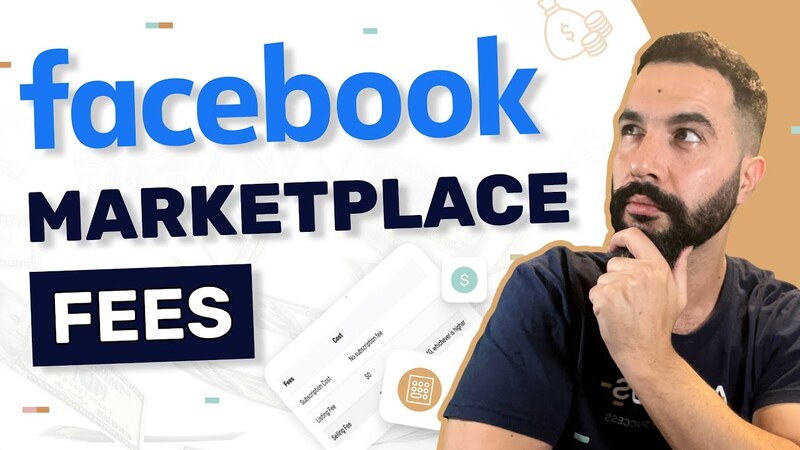
For sellers who have integrated their Shops through the Facebook and Instagram app on Shopify, there are some essential billing details to note:
- When using a connected Shopify account on Facebook, order processing fees on Meta are handled directly by Shopify.
- As a Shopify merchant, orders on Meta use Shopify Payments.
- Those already using Shopify Payments for their website will see identical fees for Meta orders billed by Shopify.
- For those using Shop Pay with third-party gateways on Shopify, website-based order fees remain unchanged. Only Meta order fees will be directly billed by Shopify.
Sellers using Commerce Manager will have a processing fee automatically deducted from their earnings upon making a sale.
This fee covers the cost of processing the transaction. Here is the rate table for reference:
| Transaction type | Sellers that onboarded to Shops via the Facebook and Instagram app on Shopify | Sellers that onboarded to Shops via Commerce Manager (expressed as % of total transaction value) |
|---|---|---|
| Card | A payment processing fee will be charged by Shopify directly. | 2.9% |
| PayPal branded checkout | 3.49% | |
| Shop Pay | 2.9% |
Let’s use an example to clarify how the 2.9% card processing fee works for your card transactions:
If a card transaction totals $10.00, encompassing the sale price, delivery fees, and relevant taxes such as sales tax, a processing fee of $0.29 will be deducted. Thus, your net payout is $9.71.
Key points about Meta’s processing fee:
- It’s calculated as a percentage of the total transaction amount, which includes taxes, surcharges, delivery fees, and state-mandated fees related to the transaction.
- This fee covers the cost of payment processing and applies to all checkout transactions across product categories on Facebook and Instagram Shops.
- It may be subject to additional taxes and fees as required.
Regarding chargeback fees:
- Sellers onboarded to Shops through Shopify’s Facebook and Instagram apps will have Shopify manage chargebacks directly.
- For sellers onboarded to Shops via Commerce Manager, refer to “About chargebacks on Commerce Manager” for information on handling chargebacks.
Five tips for effectively selling on Facebook Marketplace
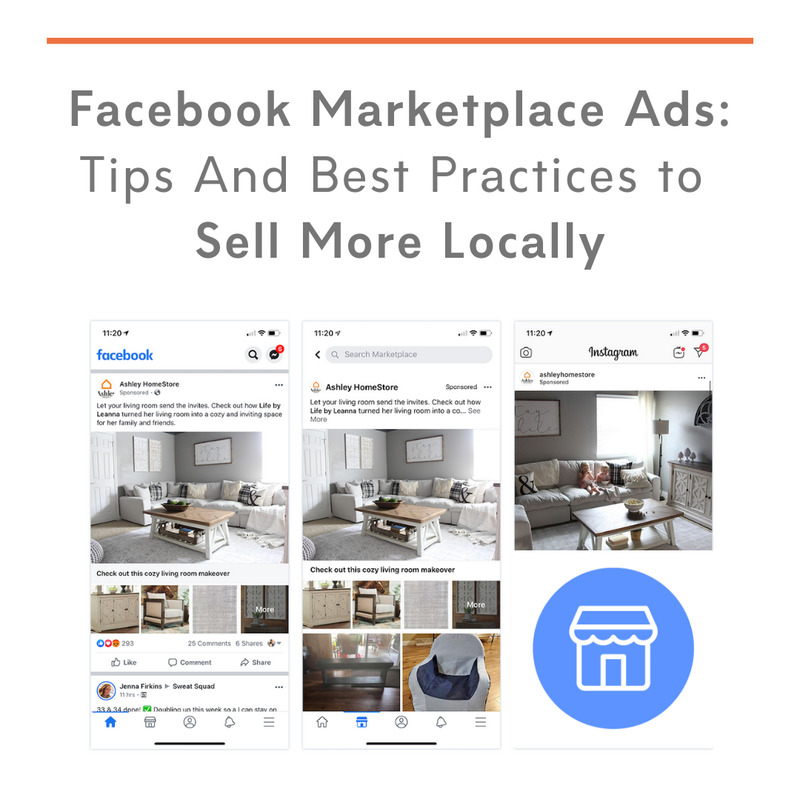
Research Which Products Are Best Sellers on Facebook Marketplace
Staying updated with market trends is essential, especially on platforms like Facebook Marketplace. Regularly checking the “Today’s picks” on its main page can offer insights, like noticing the current demand for furniture. Moreover, it’s beneficial to assess competitors by filtering through categories and searching niche products. By observing their listings, you can refine your strategies and remain competitive.
Add Quality Photos of Your Products
Quality photos on Facebook Marketplace can enhance your shop’s appeal and professionalism. You should use good lighting and capture all the important details, which will make a big difference.
Additionally, photos should be at least 600 pixels wide. For items like fashion and jewelry, featuring models in the pictures can further boost sales.
Select the Right Category for Your Product
When selling a car, it’s essential to list it under the automobile category. While this step is often overlooked, proper categorization ensures your listing is easily discoverable on Facebook Marketplace.
Use Keywords in the Title and Description
Understanding the terms potential customers use when searching for products is vital. Typically, a combination of the product type, brand, and either color, genre, or feature works best. Additionally, while keeping your description short and compelling, ensure it’s genuine and resonates with your target audience. Adjusting your tone to appeal to your ideal customer can make all the difference.
Take Paid Ads into Account on Facebook Marketplace
Advertising on Facebook Marketplace is not only cost-effective but also reaches a broader audience than regular Facebook feed ads. Additionally, these ads appear in both the Marketplace and users’ news feeds, offering greater visibility.
FAQs
- Enhancing your Facebook listing with additional keywords in the title and description.
- Expanding the description to provide more comprehensive information about the item.
- Enlisting the services of a professional photographer to capture high-quality images of your products.
Considering the vast reach of Facebook Marketplace with billions of users, it's an ideal platform if you have the right product for the right market. Given its popularity, if your product is in demand, you can likely succeed in selling almost anything there.
For products that require shipping, the customer will use Meta Pay. As the seller, you'll receive your payout (with a deduction for the transaction fee) in one of two ways:
- 15-20 days after indicating that the item has been shipped and providing the shipment's tracking details, OR
- 5 days after the item has been delivered and delivery confirmation is received.
However, when selling locally, it's essential to prioritize your safety by
- Using a secure payment method like cash or a person-to-person payment platform like PayPal or Venmo.
- Meeting in a public, well-lit location, such as a grocery store or a police station parking lot.
In Conclusion
This article provides a step-by-step tutorial on how to sell on Facebook Marketplace, along with helpful tips and information that every ecommerce merchant should take advantage of.
Learn more on how to do business on Facebook:
New Posts







